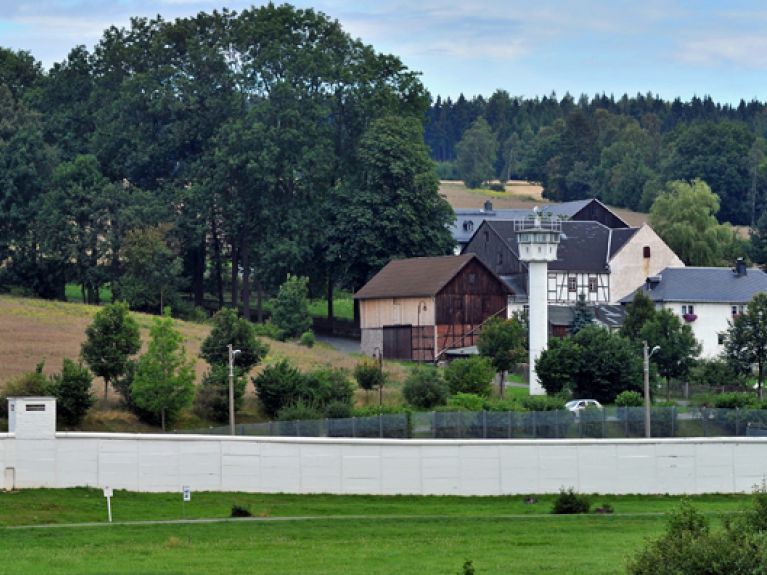Divided, but not separated
A dossier on the 25th anniversary of the fall of the Wall. Part 5 focuses on Mödlareuth, also known as “Little Berlin”. The German-German border once ran through the village.

Looking as though it was ordered and then never collected, the T34 combat tank stands in a field next to the car park. During the Second World War the Soviet army liberated and occupied Saxony and Thuringia with this tank, which was later used by the National People’s Army of the GDR. This mammoth military vehicle prepares visitors for an encounter with a past that Mödlareuth will not put behind it for some time to come.
The attractive village with roughly 55 inhabitants went down in history as “Little Berlin”. The people here experienced how the Iron Curtain fell across their everyday lives. The initial wooden fence was replaced by a 3.3-metre-high concrete wall that divided Mödlareuth into East and West from 1966.
The Tannbach, the stream that flows through the village, already marked the frontier between the Kingdom of Bavaria and the Principality of Reuss from 1810. However, it was only after the Second World War and the division of Germany into four occupation zones that this administrative border was suddenly transformed into a deep abyss.
Families torn apart
Monika Schmalfuss remembers well “how people suffered”. The 70-year-old works as a volunteer at the German-German Museum in Mödlareuth. Schmalfuss was born in the West German city of Hof, but her family moved to the East near Mödlareuth where there was work. In 1949 Schmalfuss’s father jumped across the Tannbach back into the West – and stayed there. Mother and daughter were only able to leave the GDR in 1956. Seven years had passed. “I never had a close relationship with my father afterwards.”
The border opened up in Mödlareuth on 9 December 1989. It took another half year until 17 June 1990 before bulldozers demolished the Wall. None of this should be forgotten. “We want to remember the past,” says Klaus Grünzner. The 61-year-old is honorary mayor of the Municipality of Töpen, to which the Bavarian part of Mödlareuth belongs. “Here you can experience history.” Approximately 70,000 visitors from all over the world come to see the village every year.
Some of them experience the solidarity that prevails among the inhabitants of Mödlareuth – today perhaps even more than in the past. Local people meet in the Grenzgänger inn where they also celebrate together. The people of Mödlareuth built their village community centre themselves. The fact that the village is still divided between Thuringia and Bavaria is not important, believes Mayor Grünzner. The continued existence of a Wall in people’s heads is a cliché, he explains, one that is mainly cultivated by outsiders. People in Mödlareuth are fed up with hearing it.
© www.deutschland.de
